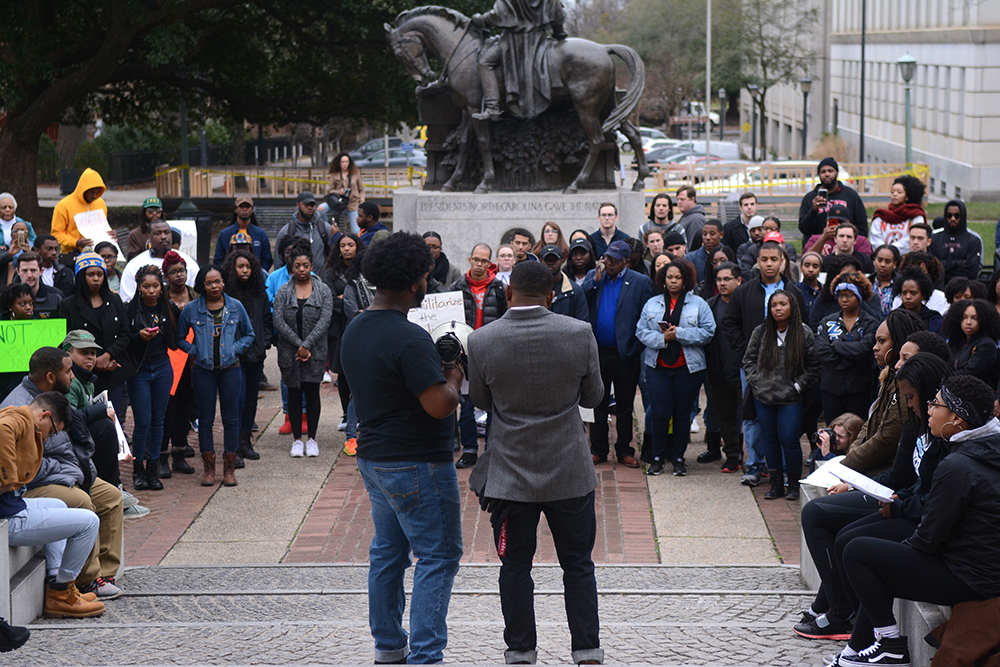Image From Creative Commons
On Oct. 21, the North Carolina Department of Health and Human Services (NC DHHS) released an action plan to help homeless youth. The plan focuses on helping homeless children and their families access underused resources and improve public awareness.
The proposal is known as the “Action Plan for an Early Childhood Homelessness Support System.” It has a list of goals such as building support for professionals working with young children, working with organizations to improve policies, collecting data on childhood homelessness and creating community-based systems for children and caregivers experiencing homelessness.
Dr. Mary E. Haskett, a psychology professor at NC State University and Marsha R. Basloe, the Child Care Services Association president, created this plan. They proposed it to the NC DHHS when applying for a Federal Preschool Development grant. After receiving funding, the DHHS began creating the plan with NC State.
Dr. Haskett’s organization, Yay Babies, which works with children and their parents experiencing homelessness, is leading the development of the projects. “We are a group of people from across the state who are really invested in trying to make these families more visible in their communities so that they receive the services,” Haskett said.
Assisting homeless youth is difficult, given that many of these children end up being unseen. “One of the things I have found and my colleagues have found is that the families that are experiencing homelessness with very young children tend to be invisible in our communities,” Haskett said.
This invisibility can be seen even in the Governor’s Council for Homeless Programs, which specifically focuses on issues relating to housing stability. “These are a group of people who are very knowledgeable about homeless services in North Carolina, but most of them acknowledged that they’d never thought about babies and toddlers and preschoolers.”
There are many causes for this, including inconsistent and narrow definitions of homelessness. Unawareness about youth homelessness leads to these children being forgotten and under-prioritized within programs meant for people who are experiencing homelessness.
Not prioritizing these children can lead to a variety of overlooked consequences that are unique to homeless youth. An example of this is homeless shelters. “They avoid shelters, because shelters are not safe places for very young children. And, so they tend to be staying with other families doubled up, sometimes called couch surfing, or they will stay in hotels or motels for a short period of time when they can afford it,” Haskett said.
Stable housing is crucial in childhood development. Homeless children often end up in unstable housing situations, especially because they often can’t go to shelters. Unstable housing creates stress that can create tension within families.
This stress, which becomes toxic stress after an extended period of time, can lead to lifelong health problems, including heart disease and obesity. It can also affect long-term brain development, reducing the amount of neural connections in the brains of children when neural connections should be increasing.
Resources intended to help children dealing with developmental delays do exist. “There’s also early intervention, and that’s a state program that provides developmental services for young children who are delayed,” Haskett said.
However, these services often fail to assist young homeless children. Haskett said, “But again, they tend to serve very few children that are experiencing homelessness. So, a lot of the services that are available across the state just aren’t reaching homeless families. And so this action plan was really to encourage the state to do a better job of finding these families and serving them in a way that is.”
Another issue these children face is childcare, mainly because of the difficulty in accessing resources. “In some locations, childcare is more expensive than college. So families are struggling to afford it, and families that are homeless have even more difficulty getting their children in childcare,” Haskett said.
The price of childcare has become a major issue in North Carolina in recent years. According to ABC 11 Eyewitness News, daycare costs have become unaffordable in many years, in large part due to issues during COVID-19. In 2022, infant daycare costs about $9,480 a year. This exceeded NC State’s tuition prices at the time, that being $9,130.
In recent years, the price of childcare hurts parents’ ability to advance their careers. Even parents who continue working face situations that hurt career advancement, including leaving work early. Often, parents are forced to leave their jobs to take care of their children, further reducing opportunities for economic growth.
“Children experiencing homelessness tend to be not on the radar of agencies that help families. So they are not having access to childcare and of course, parents can’t be employed and get their own housing if their young children aren’t in childcare,” Haskett said.
A major step in this process is finding “champions” in these communities to advocate for these families. When speaking with the Abstract, Haskett mentioned that these children struggle with finding advocates due to their previously mentioned “invisibility” in their communities.
They are looking for these advocates at different levels of the community, including educators, pediatricians and homelessness services. By raising awareness of homeless youth, these community leaders and peers can help advocate for them. These advocates will then work with the state to help ensure the plan’s success.
Finding these champions is a matter of spreading awareness of the issue. “The first step really is to increase awareness. The more people that are aware that babies and toddlers are experiencing homelessness in our state, the more likely we are to identify those champions. So one of the big tasks that I have ahead is getting this report distributed widely to people in the community,” Haskett said.
Haskett believes that the pandemic helped increase awareness regarding homeless children in our communities. The action plan seeks to create awareness through public awareness materials. “So that’s what we have to do, we have to educate. Educate the general population and also educate the experts.” Haskett said.
By creating this action plan, North Carolina seeks to reduce these consequences and help families experiencing homelessness easily access resources in early childhood. Even though the plan is complete, implementation will take several years.
You can find resources for housing insecurity on the city of Raleigh’s website under the resources for housing crises and homelessness page. NC State students suffering from food and housing insecurity can find resources on the NC State Department of Academic and Student Affairs website.
The action plan is available online through the NC DHHS Division of Childhood Development and Early Education website.




